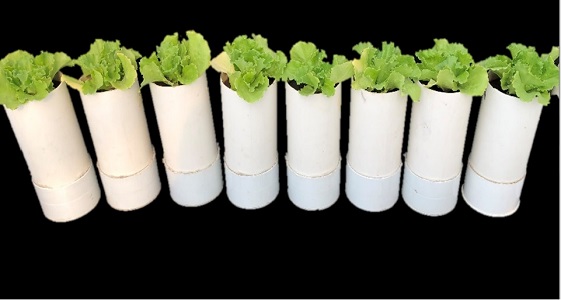Nitrogen Nanocomposite as a Slow-Release Fertilizer in Soil Columns with Lettuce Plants
DOI:
https://doi.org/10.28940/terra.v41i0.1712Keywords:
leaching, nitrate, organoclay, nanofertilizerAbstract
The continuous use of excessive nitrogenous fertilizers generates environmental risks by increasing nitrate accumulation, volatilization and leaching in soil, which causes losses and low ef ficiencies in the use of nitrogen (N). The objective of the present study is to evaluate the application of nitrogenous nanocomposites (NCN) as a slow-release fertilizer (SRF) in soil and its ef fect on growth of the lettuce crop. The NCN was prepared by sorption of a cationic surfactant on a bentonite clay. The study was performed in soil columns; the evaluated treatments were ratios of NCN and conventional fertilizer (FC) 25/0, 50/0, 75/0 and 100/0, 0/100, 25/75, 50/50 and 75/25. The variables evaluated were: fresh weight, dry biomass, leaf area, electrical conductivity, NO3- concentration in leachate and leaf, soil plant analysis development (SPAD) and normalized dif ference vegetation index (NDVI) units, as well as NCN release in deionized water. The results obtained indicate that the NCN treatments equaled the control af ter 40 days except for the 25/0 treatment that reduced the fresh weight variables by 20% and leaf area by 18% with respect to the 0/100 control. The SPAD and NVDI values did not have significant dif ferences between treatments. The NCN/FC 0/100, 50/50 and 75/25 ratios increased nitrate concentration in leaves by 19%. The 100/0 treatment increased total dry biomass with 48%, 87% root volume and 73% root dry biomass. The results of the release in deionized water confirmed that NCN gradually releases nitrates and in higher amounts than those calculated. Finally, to conclude the nanocomposite material has the potential to be used as a slow-release fertilizer when growth increases. Therefore, nanocomposites could be an alternative to reduce the use of conventional fertilizers and nitrogen losses in soil.
Downloads
Publication Facts
Reviewer profiles N/A
Author statements
- Academic society
- Terra Latinoamericana
- Publisher
- Mexican Society of Soil Science, C.A.

















